


A grade 2 print from a Fuji Neopan 1600 35mm negative, on Sterling Premium FBVC
Sterling Imaging Ltd are now making an alternative brand of paper more widely available. Although the Indian Sterling brand has been around for some time, and was once handled in the UK by Kentmere, it has been fairly difficult to find here. The range includes Pro RCVC, a resin-coated variable contrast paper, Premium FBVC, a fibre-based VC paper, and Premium F Lith, a fibre-based Lith paper. Also in the range but not included in this test is Signature, a fibre based warm-toned VC paper.
Sterling paper is marketed in Britain in tandem with Fotospeed chemicals, so I used developer supplied by them as well as Agfa Neutol WA to carry out the tests. All prints were developed for three minutes and passed through a 2% stop bath before being fixed for four minutes in Fotospeed Fixer diluted 1:9.
After testing both papers for grades and handling, I made a number of prints from various negatives and compared them with prints made on Ilford Multigrade IV and Agfa Multicontrast Classic.
When compared to Multigrade IV, Sterling Pro RCVC shows marginally less contrast in that the whites of Multigrade IV are cleaner, although this may have something to do with the paper base colour. Pro RCVC is cream-coloured against the brilliant white of Multigrade IV. The Oyster surface of Sterling is very similar to the lustre surface of Multigrade IV although I do prefer the smoother surface of Oyster, which is rather like a cross between matt and glossy unglazed.
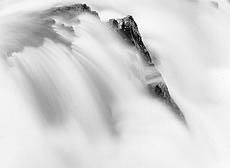
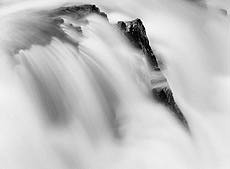
Above left - the Sterling Premium version of this shot shows less highlight area detail, grade for grade, than a comparable Agfa Multicontrast Classic print, right
Sterling Premium FBVC, when compared to Agfa Multicontrast Classic, is about one grade softer in contrast where prints were made using the same grade on both papers. The surface of the Sterling glossy is slightly less glossy than the Agfa, which may explain part of the increase in visual contrast shown by Multicontrast. Generally, where the gloss is higher then the contrast is greater. Although Sterling Premium is lighter in weight I found no problems in handling it when wet.
Sterling Premium FBVC is probably the best fibre-based paper that I have tested from the point of view of drying flat. When placed face down on a drying rack after all surface moisture has been removed and left at normal room temperature Premium dried with just a slight curl toward the emulsion with no sign of crinkling along the edges. The fact that the paper weight is slightly lighter than its competitors may have a bearing on the drying quality of Sterling Premium. The dry down factor was a 12% reduction in exposure.
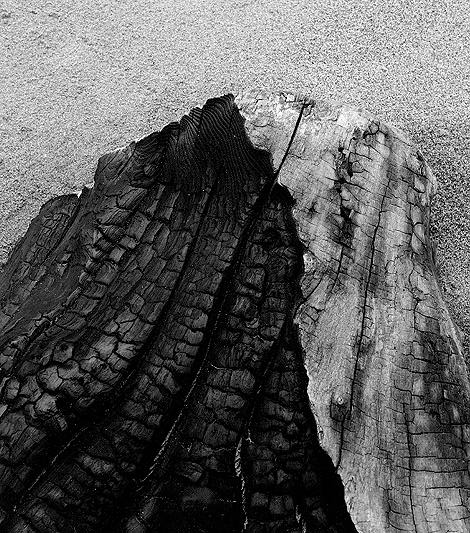
This print used grades 2 and 4 filtration to bring out the contrast of the original, and the density necessary for the rich dark burned wood was improved by selenium toning
Sterling Premium is noticeably cooler in tone than Agfa Multicontrast Classic. I used Fotospeed PD5 and VC developers as well as Agfa Neutol WA. Both Fotospeed developers gave a fairly neutral tone but the Neutol WA gave a noticeably warmer tone on both papers. Premium tones well in selenium, with the blacks showing rich luminosity after being passed through a selenium bath diluted 1:12 for about 5 minutes. A slight cooling of the print colour after toning in selenium was noticeable.
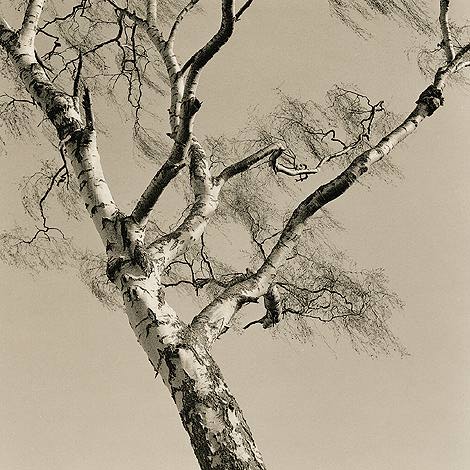
The tones produced by 50 seconds development of Premium F Lith paper in lith developer
Sterling Process Lith will produce a variety of warm or coloured tones when processed in very dilute lith developer by infectious development. The prints are heavily overexposed and prematurely taken from the developer to produce the variety of tones. Patience is required to succeed with this process, as the development times can be long and in the early stages the failure rate high. However, once you have produced a successful lith print you learn at which point to "pull" the print from the developer and the success rate increases. The combinations of print colour and contrast are endless when using this paper and the examples shown here were produced in one short evening in the darkroom. Perhaps the best advice that I can offer with regard to lith printing is to obtain a copy of Tim Rudman's book Master Printing Course, which has a very comprehensive section on the process.
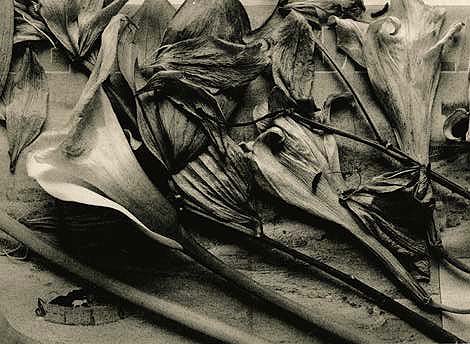
Although this reproduction can't show it properly due to JPEG compression, Premium F Lith has produced an unusual pattern of peppered dots in the mid-tones by infectious development
The one area that I feel that Agfa has the edge is in the print colour. I like warm toned prints and could not match the Multicontrast print colour when using Sterling Premium. This is a personal view and no doubt there are many photographers who prefer the more neutral tone of Premium. I intend to experiment with developers to see how I can produce a warmer tone from Sterling Premium and will report my findings at a future date.
Readers of this column will know of my views on RC papers. I rarely use them and when I do it is mainly for work prints. Sterling PRO RCVC is as good as its competitors, it handles well and produces a smooth range of tones but in my view, like all RC papers, it lacks that sparkle which a fine print requires. I am not condemning resin-coated papers out of hand - I'm sure that they do a good job for many photographers who have not got the facilities for processing fibre papers, or need print runs for press distribution.
Process Lith is an interesting and exciting diversion from the traditional photographic print. It offers a considerable opportunity to the creative and innovative photographer to produce a variety of effects that enhance the right image.
Generally, Sterling Imaging and Fotospeed products have given us a good range of photographic materials which have expanded the choice available. They deserve our support for continuing to challenge the big three and for giving us a range of materials which can hold their own in a market place that is already full of very good products. Sterling and Fotospeed products can be obtained by mail order direct from their warehouse at;
Sterling Imaging Ltd
Fiveways House
Westwells Road
Rudloe, Corsham
Wiltshire SN13 9RG
UK
Telephone (+44) (0) 1225 812531